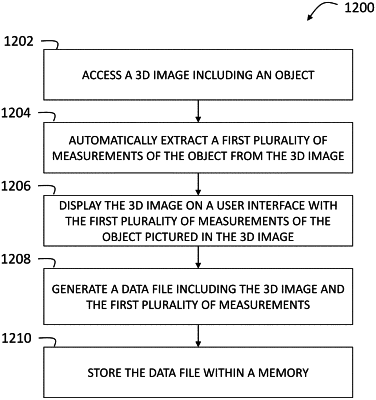| CPC G06Q 40/08 (2013.01) [G01C 11/025 (2013.01); G01C 11/06 (2013.01)] | 20 Claims |

|
1. A structural analysis computing device for generating an insurance claim for an object pictured in a three-dimensional (3D) image, the structural analysis computing device coupled to a drone, the structural analysis computing device comprising:
a memory;
an object sensor; and
at least one processor in communication with the memory and the object sensor, wherein the at least one processor is programmed to:
transmit an instruction to the drone to navigate to a room;
transmit an instruction to the object sensor scan an interior structure of the room to capture a 3D image of the room, wherein the room includes a plurality of objects, the 3D image including an object of the plurality of objects;
analyze the 3D image to identify features of the object using image analysis trained using one or more machine learning algorithms;
based upon the analysis, automatically identify the object of the plurality of objects within the 3D image as an insurable asset;
determine whether an insurance policy covers a damaged feature of the identified object based upon a nature and extent of damage to the identified object; and
automatically determine, when the insurance policy covers the feature, a cost of repair of the damaged feature of the object based upon the nature and extent of the damage.
|